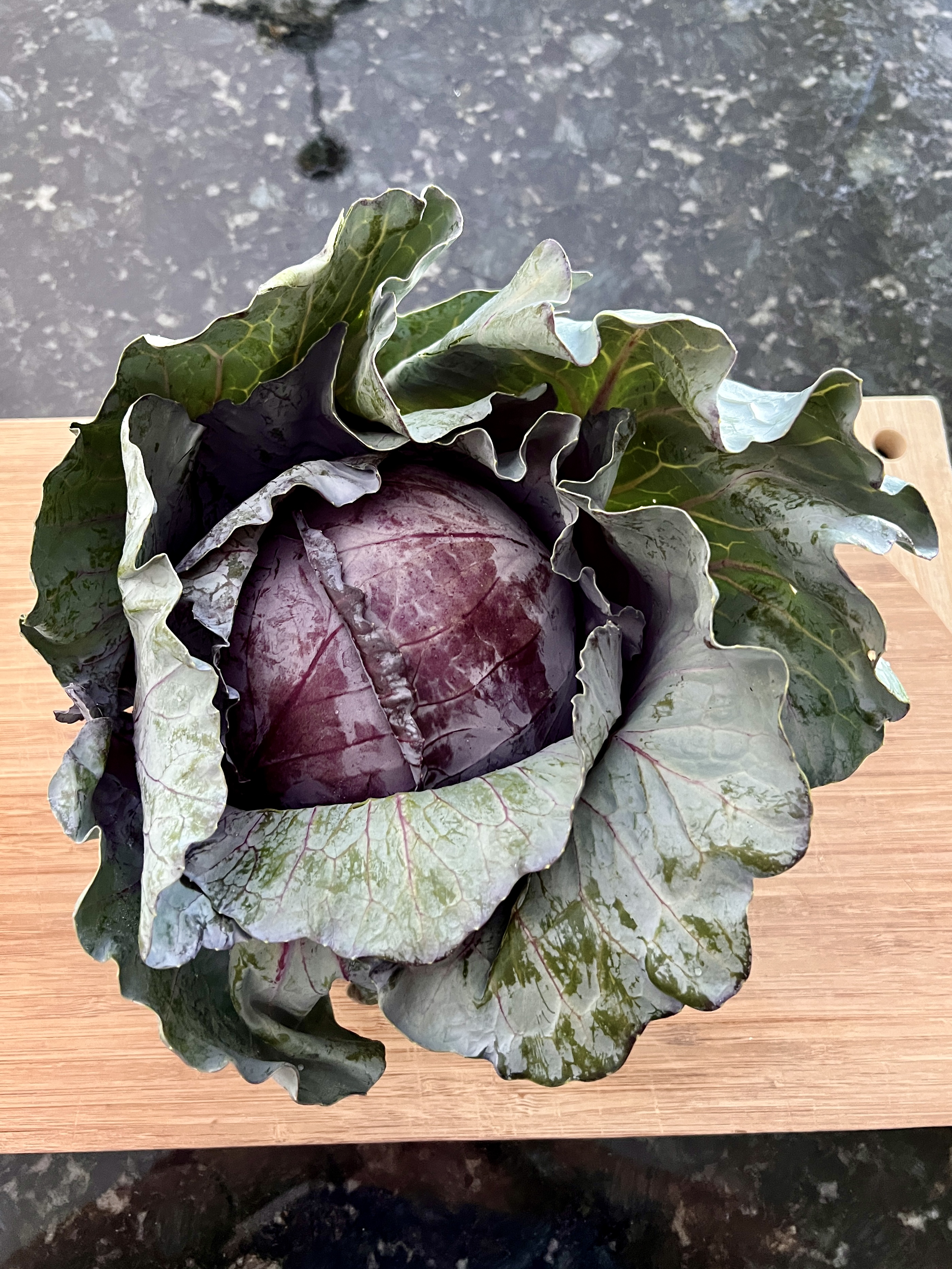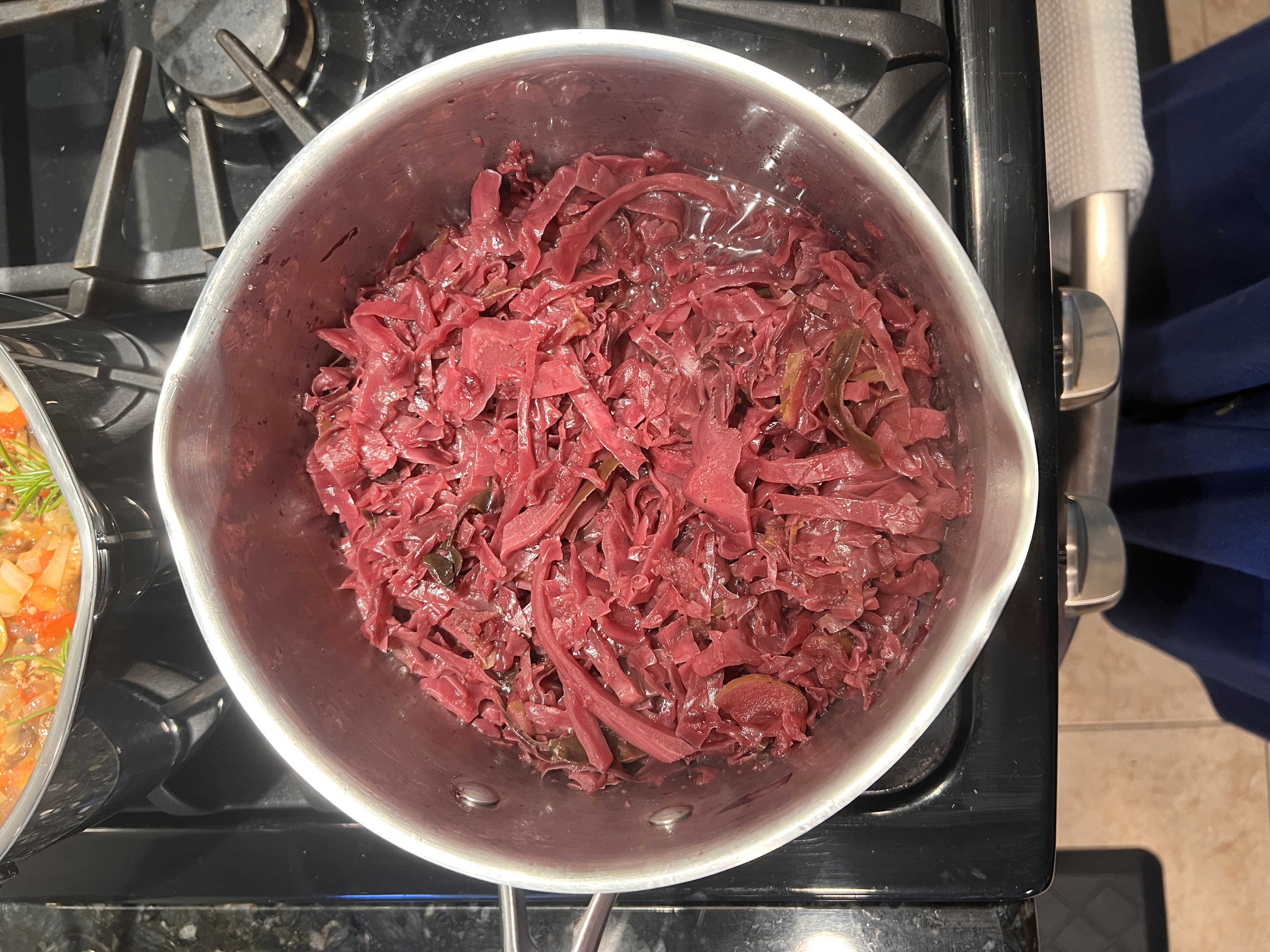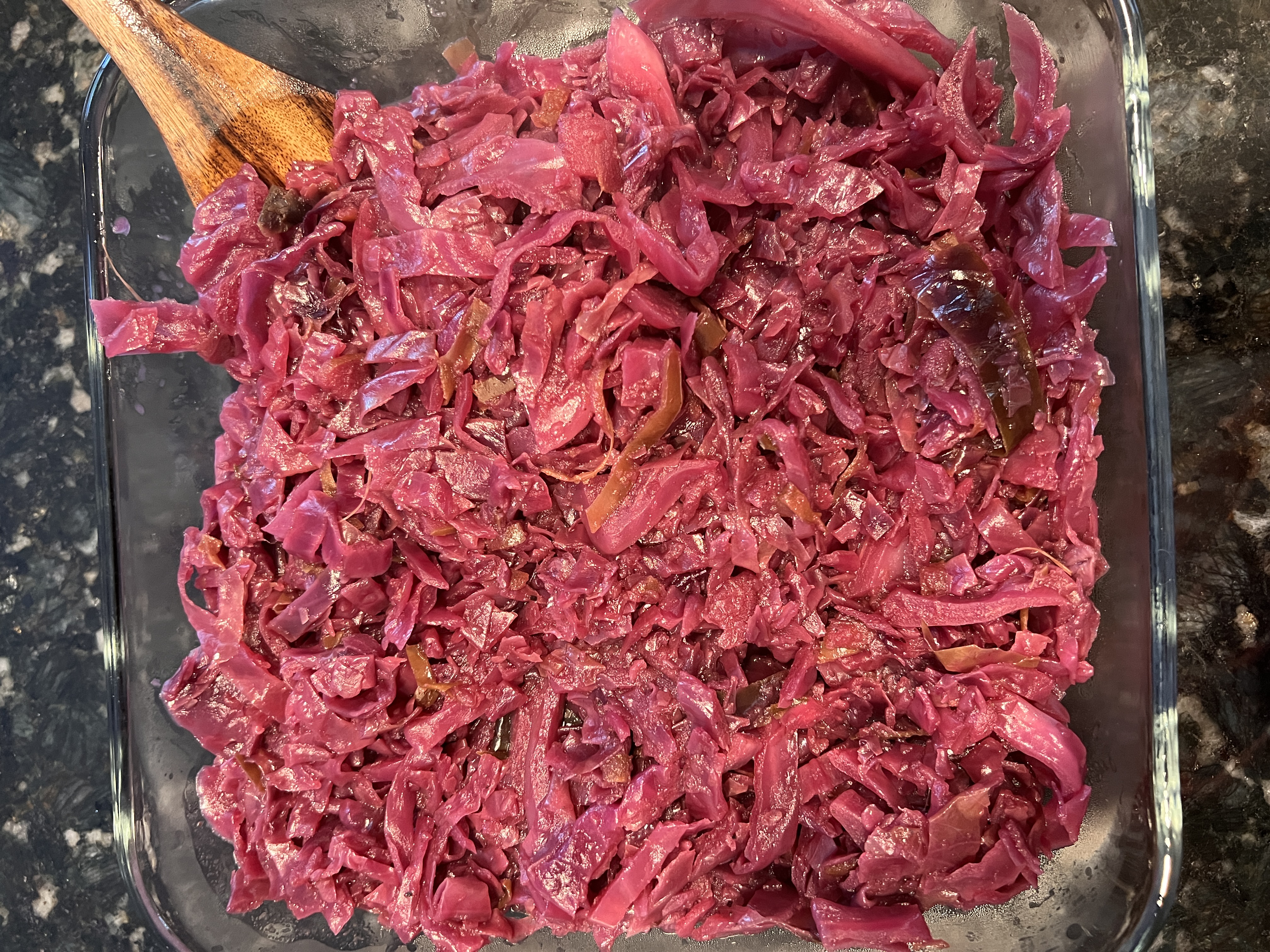Make this easy recipe for German red cabbage with apples (blaukraut) as one of the most popular German side dishes this Christmas.

Every year around Christmas time, fall harvest is well behind us and we turn our focus toward all of the holiday favorites.
On Christmas Day, right alongside my warm German potato salad and Prime Rib, you’ll find a dish piled high with this beloved German red cabbage with apples – also called blaukraut once cooked.
With an hour and a half of hands-off stovetop simmering, this recipe has turned cabbage haters into eaters without any effort at all.
I hope your family loves it as much as we do!
German Red Cabbage With Apples Recipe (Blaukraut)
Ingredients:
- 1 medium head of red cabbage
- 2 green apples
- 2 tablespoons butter
- 1/3 cup apple cider vinegar
- 1/3 cup cane sugar
- 1/3 cup water
- 2 teaspoons salt
- 1/4 teaspoon ground cloves
Instructions:
Core and slice the head of red cabbage into long thin strips. Then core and slice the apples.

Add all ingredients to a pot and bring the mixture to a low boil over medium heat. It’s totally fine if the pot is overstuffed and it seems near impossible to mix. The volume will reduce by at least half during the cooking process.

Cover with a lid and reduce to a simmer for about 60 minutes. Stir every so often to encourage even softening.
Remove the lid and allow the cabbage to simmer an additional 30 minutes to evaporate any remaining liquid.

What to Serve With German Red Cabbage
Part sweet, part tang, German red cabbage pairs well as a side dish for any savory main course.
For us, this typically includes stuffing coated pork chops, warm German potato salad, slow cooker pot roast, beef rouladen, schnitzel, or simple chicken cutlets. You really can’t go wrong!

Storing and Freezing Leftovers
German red cabbage stores beautifully in both the refrigerator and freezer, depending on how long you need to keep it around. Store in an airtight container in the refrigerator for up to 5 days or in the freezer for up to 4 months.
Reheat leftovers on reduced power in the microwave or, for best results, over low heat in a pot on the stove.
Pin It For Later!

